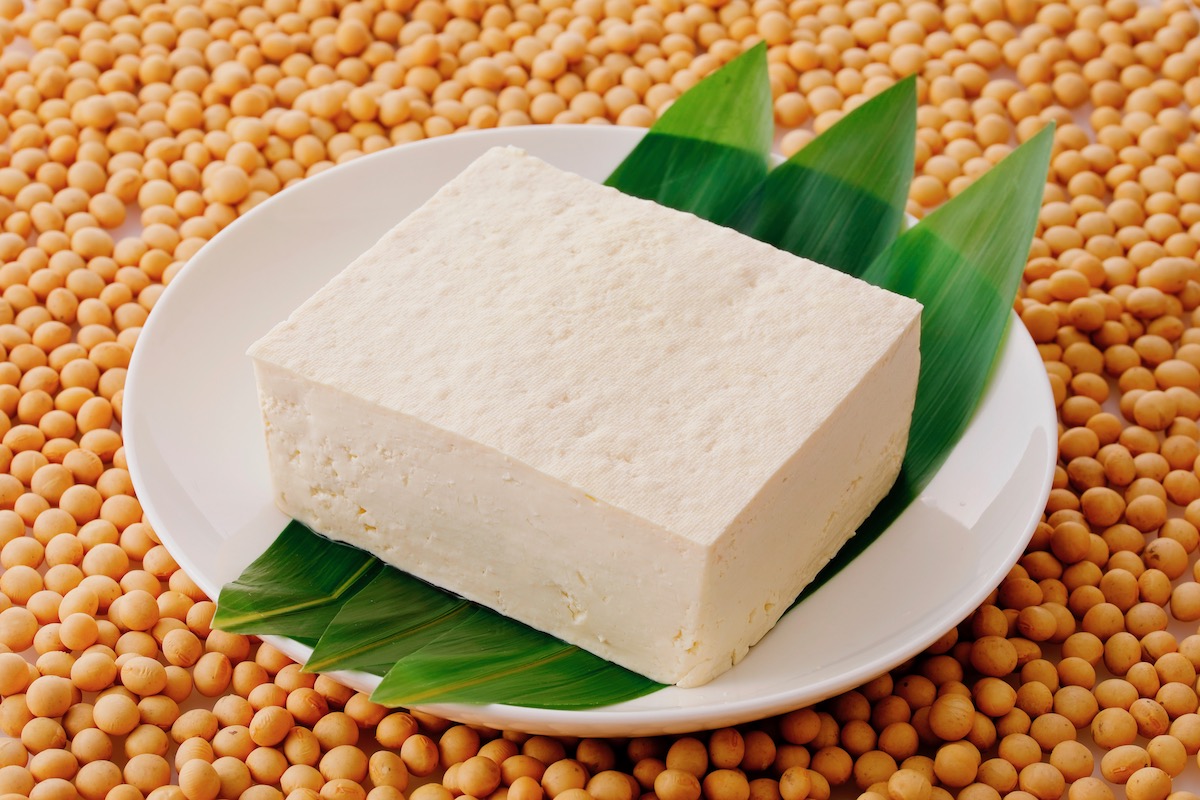Unfermented Soy vs. Fermented Soy
Last October, American food professionals visited fermented food producers to deepen their knowledge of Japanese fermentation culture during the “Hakko Tourism in Japan” tour campaign. As part of the tour, organizers held a tasting session where guests gave candid advice from the perspective of the American market to food product manufacturers looking to enter the United States market.

Soy in Japanese culture
In the United States. People are consuming not just soy but hydrogenated soybean oil in ridiculous amounts. Food manufacturers use hydrogenated oils to save money, extend shelf life, add texture and increase stability. During the production of hydrogenated oil, a type of fat called trans fat is made. “Partially hydrogenated” oils contain trans fats in the final product. Partially hydrogenated oils can affect heart health because they increase “bad” (low-density lipoprotein, or LDL) cholesterol and lower “good” (high-density lipoprotein, or HDL) cholesterol.
In Japan, they’re eating specific kinds of soy. To a certain degree, Japanese people eat things like fermented and unfermented soy products, such as miso and tofu. It is obviously better than hydrogenated oil. There is a massive study published in the journal nutrients. In that case, you can look at Six studies with over 92000 participants, all epidemiological studies. They classified the Japanese staple diet as containing soy, fish, seaweed, miso, pickles, and green tea. They categorized that as the primary staples and found that even based on this data, people who adhered to that diet lived longer. It is unclear whether soy consumption directly correlates with longevity in Japan. However, the point remains that soy can provide essential nutrients and may be beneficial in a balanced diet.
How fermentation makes soy unique?

Japanese people also consume miso soup in general. Miso soup got broth, reasonable amounts of sodium, the fermentation process, and seaweed a lot of times in it. The seaweed has other components to it too. Japanese people consume so much in the way of seaweed with fucoxanthin, which has substantial microbiome effects and potentially positive results when it comes down to insulin modulus.
The other thing is that Japanese culture has an extremely low level of dementia, and fermented soy may be able to explain it. When you look at a study published in the Journal of Agriculture and food chemistry, the study shows that an enzyme extracted from natto may benefit heart and artery health. Nattokinase is a component of natto, fermented soybeans that may help clear out beta-amyloid plaque. Beta-amyloid plaque is a significant contributor to Alzheimer’s and Dementia. This doesn’t mean that eating fermented soy will magically clear this up. There are a bunch of other factors we have to look at with the Japanese culture’s variables, such as high fiber and active lifestyle.
Is unfermented soy unhealthy?

According to “Sprouted Grains: A Comprehensive Review” from Journal of Nutrients, germination is a process of intense biochemical changes that produce new and beneficial compounds. The enzymatic activity involved in the breaking down starch reserves results in hydrolysis, forming pinholes on the surface of the grain granules. Additionally, this causes an increase in oligopeptides and free amino acids and a shift in amino acid composition. A decrease in anti-nutritional factors such as phytate, trypsin inhibitor, and tannins, alongside an increase in bioactive compounds, is also observed during germination.
I don’t think tofu is bad, as massive studies are introduced above. Different processing methods, such as gamma irradiation, dehulling, soaking, sprouting, cooking, and malting, also reduce anti-nutrients and even improve micronutrients and bioavailability. Traditional cooking methods, including washing, pilling, and soaking, have led us to healthier options. These preparation methods can produce functional foods due to the increase in nutrient content and bioavailability.
So how can non-Japanese people apply for their diet? The debate surrounding soy is ongoing and complex. However, the current body of research suggests many potential health benefits associated with consuming soy products regularly as part of a well-rounded diet. These benefits include lower levels of inflammation, reduced risk of certain chronic diseases, and improved gut health. What we should not skip important processes are traditional preparation methods. As we seek how different culinary practices affect our food intake and overall health, we may find even more reasons to appreciate these simple techniques that have been around for centuries.
References:
1. Katagiri, R., Sawada, N., Goto, A., Yamaji, T., Iwasaki, M., Noda, M., Iso, H., Tsugane, S., & Japan Public Health Center-based Prospective Study Group (2020). Association of soy and fermented soy product intake with total and cause specific mortality: prospective cohort study. BMJ (Clinical research ed.), 368, m34. https://doi.org/10.1136/bmj.m34
2. Matsuyama, S.; Shimazu, T.; Tomata, Y.; Zhang, S.; Abe, S.; Lu, Y.; Tsuji, I. Japanese Diet and Mortality, Disability, and Dementia: Evidence from the Ohsaki Cohort Study. Nutrients 2022, 14, 2034. https://doi.org/10.3390/nu14102034
3. Messina M, Duncan A, Messina V, Lynch H, Kiel J, Erdman JW Jr. The health effects of soy: A reference guide for health professionals. Front Nutr. 2022 Aug 11;9:970364. doi: 10.3389/fnut.2022.970364. PMID: 36034914; PMCID: PMC9410752.
4. Yasutake Tomata, Takashi Watanabe, Yumi Sugawara, Wan-Ting Chou, Masako Kakizaki, Ichiro Tsuji, Dietary Patterns and Incident Functional Disability in Elderly Japanese: The Ohsaki Cohort 2006 Study, The Journals of Gerontology: Series A, Volume 69, Issue 7, July 2014, Pages 843–851, https://doi.org/10.1093/gerona/glt182
5. Willcox, B. J., Willcox, D. C., Todoriki, H., Fujiyoshi, A., Yano, K., He, Q., Curb, J. D., & Suzuki, M. (2007). Caloric restriction, the traditional Okinawan diet, and healthy aging: the diet of the world’s longest-lived people and its potential impact on morbidity and life span. Annals of the New York Academy of Sciences, 1114, 434–455. https://doi.org/10.1196/annals.1396.037
6. Hsu, R. L., Lee, K. T., Wang, J. H., Lee, L. Y., & Chen, R. P. (2009). Amyloid-degrading ability of nattokinase from Bacillus subtilis natto. Journal of agricultural and food chemistry, 57(2), 503–508. https://doi.org/10.1021/jf803072r
7. Benincasa P, Falcinelli B, Lutts S, Stagnari F, Galieni A. Sprouted Grains: A Comprehensive Review. Nutrients. 2019 Feb 17;11(2):421. doi: 10.3390/nu11020421. PMID: 30781547; PMCID: PMC6413227.
Tateki Matsuda is the founder of Biohacker Center Japan, holding degrees in Applied Nutrition and Sports Movement Science. As a Professional MMA fighter in the UFC and health consultant in Boston, he combines his expertise in biohacking, nutrition, and athletics to optimize performance and promote holistic wellness.

